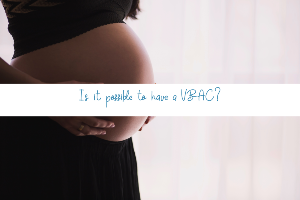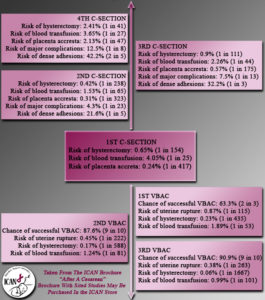Once a cesarean, always a cesarean. About 25 years ago there was the view that if a woman had delivered via cesarean section in the past, then her next childbirth should be again performed only with a cesarean section.

Each year 1.5 million pregnant women have cesarean deliveries, and this population continues to increase. This report adds stronger evidence that VBAC is a reasonable and safe choice for the majority of women with prior cesarean.
Trial of labor after cesarean (TOLAC) is the term for an attempted birth in a patient who has had a previous cesarean section. It may result in a successful VBAC (vaginal birth after cesarean) or a repeated cesarean section.
One of the biggest concerns for women wishing to try giving a natural birth after cesarean (TOLAC) is the uterine rupture. That possibility is quite rare (approximately 0,3%) but extremely severe. The odds of uterine rupture during cesarean delivery, after cesarean section according to the newest reviews range between 0,5% and 1%, for woman who had only one cesarean. That percentage is higher that deliver normally after cesarean. Of course in the case that woman have more than one cesarean section in the past the possibility of uterine rupture then in a repeat cesarean doubles the range between 1,8% and 3,7%.
We need to mention that the risk is different for each woman as it depends on a multiple number of factors.
Which women have the possibilities to achieve VBAC?
- Woman with previous at least one or more normal birth before or after their cesarean section.
- Last reviews show approximately 12 months from the previous cesarean can increase higher rates to VBAC success.
- Previous incision in uterus must only be horizontal and low.
- It is important not to have a history or rapture or fusion on the uterus in previous childbirth.
- More possibilities to achieve Vbac is if the baby is not bigger that 4500kg.
- The baby has an ideal position. It would be great if the baby is looking at the back of the mother. That position gives the baby a smallest diameter of the head to pass mother’s pelvis.
- Ideally woman with normal BMI is more likely to have normal birth after cesarean section.
- To attempt a Vbac it is better not to cause childbirth, or if the use of synthetic oxytocin needs to get used sparingly, but let it develop naturally.
From the 90% of the mother’s who have had a caesarian section and meet requirements they have more potential to attempts a normal delivery. The benefits for the mother and the baby of normal childbirth are many.
- Babies mortality are less than other cases.
- Shorter recovery time of the mother as sooner she can come back to her activities.
- Most of the woman that achieving a VBAC felt that they participate more in their labour process, equipped with knowledge about possible risks and benefits.
- A successful VBAC gives the mother the strength and confidence that “she did it!”.
- The baby will take all the benefits that a normal birth can give.
All mothers deserve the best for their childbirth, and they have to claim it.


